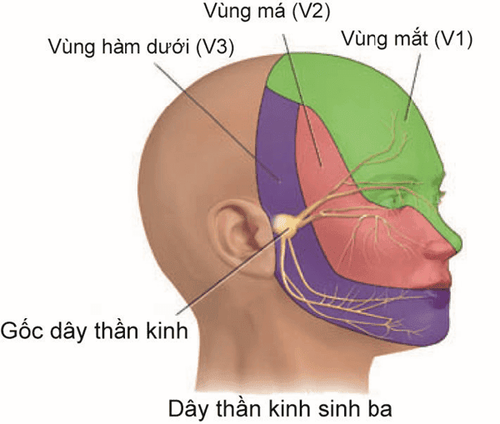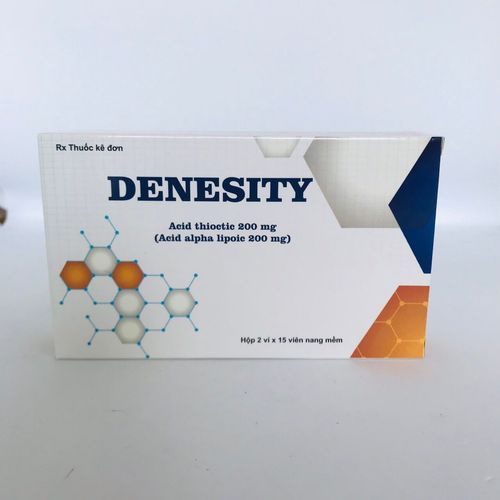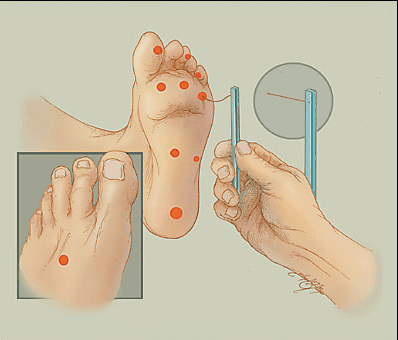This is an automatically translated article.
Sensory disturbance is a condition in which the brain has difficulty receiving, processing, and responding to information passing through the senses. This is considered a defect of the body, affecting the ability to receive information from the outside environment and especially the balanced and comprehensive development process in young children.1. What is sensory disturbance?
The body perceives and learns information by sensing the world around. This is made possible through the senses, which include sight, hearing, taste, smell, and touch. However, two other less common types of sensation are postural and vestibular sensations. Signals from all of these senses are focused on the brain to receive, process and give feedback.
Accordingly, any disturbances occurring in this process are termed sensory disturbances. Possible sites of disease are in the receptor (senses), on the signaling pathway (compatible afferent nerves) and in the processing unit (the lobes of the brain). At this time, sensory disturbances will make the body no longer able to process information or improperly process information coming from the senses. As a result, the patient will either be very sensitive or completely oblivious to signals from his or her surroundings.
2. Sensory disturbances
Hyperesthesia or hypersensitivity (overreaction), leading to sensory overload, the patient is easily overwhelmed by too many stimuli from the environment. In contrast, people who are less sensitive, less responsive, are often slow or have limited response to stimulus signals from the environment.
Here are some characteristics and symptoms to help identify two common sensory disorders:
2.2 Hyperesthesia disorder
When there is a hypersensitive disorder, the patient will have the following manifestations:
The patient will always feel uncomfortable and uncomfortable when wearing clothes due to the feeling of cloth rubbing against the skin, itching. Being stimulated by new signals and information from the surrounding environment, including common things such as clothes, furniture or even food (a person can be considered a picky eater). for this reason). Has a low tolerance for crowds, bright lights, and noisy areas Dislikes and avoids human touch, including hugging, cuddling, even if it's from parents or other familiar personalities Irritability, irritability, sometimes curiosity and panic attacks Difficulty sleeping, not sleeping well

Người bệnh bị rối loạn tăng cảm giác sẽ khó ngủ, ngủ không sâu
2.3 Sensory loss disorder
When suffering from hypoesthesia, the patient shows:
Has a high tolerance for pain Often behaves aggressively towards people and objects around, can be seen as rough, aggressive Unable to sit saddle; if young are often disruptive, disobedient, inattentive, attentive May be unresponsive to name calling, talking or touching Tends to favor vigorous movements, such as climbing or jumping Lacks spatial awareness or personal possession Often makes loud vocal or physical noises Easy to fall asleep, deeply asleep, and difficult to awaken

Người bệnh bị rối loạn giảm cảm giác lại thường dễ ngủ, ngủ sâu và khó đánh thức
2.4 Effects of sensory disturbances
An adult suffering from a sensory disorder, which is a sequela after the damage on the way of receiving, transmitting and processing sensations, will have difficulty reintegrated into community life as before. this. They will have limitations in studying, working and even daily activities such as driving, eating, personal hygiene, and recreational activities.
However, the effects of sensory disturbances will manifest most clearly and severely on young children. Hypersensitive children are often blamed for being misjudged or fussy, while hyposensitive children are often "abandoned" by appearing insensitive or apathetic. Some children with sensory disturbances may have some form of autism spectrum disorder with overlapping symptoms. As a result, children are at risk of being misdiagnosed and mistreated. Thus, sensory disturbances, if children are not properly cared for, when growing up, children can lead to depression and anxiety. Some children may actively avoid social situations, form and develop obsessions with people around them, and isolate themselves.
2.5 How to treat sensory disturbances
Sensory disturbances that occur in adults are often sudden and are the result of physical damage, most commonly after ischemic stroke or hemorrhagic stroke. As a result, adjustment, despite limited potential for full recovery, is often facilitated by mature consciousness. However, the speed of recovery depends on the attitude and personality of each individual. Some sensory disturbances may persist for life, and adult patients often know how to reconcile and facilitate their reintegration into the community, through their own efforts and those of others. around.On the contrary, when sensory disorders occur in pediatric patients, each child will have different conditions, abilities and ways in the process of physical and mental development. However, sensory disorders in young children need to be noticed by parents and detected early for timely correction. After a thorough evaluation by medical professionals, your child will likely begin living, learning, and working with a therapist. The goal of therapeutic measures is to develop comprehensive mechanisms to cope with and harmonize when perception is increased or to train the ability to focus and pay attention if perception is decreased.
2.6 Sensory disturbances that can be done at home
Home is always the ultimate place of comfort and protection, safety. When a patient suffers from a sensory disorder, whether it is an adult or a child, home and loved ones are always the ideal places to help them gradually make appropriate adjustments and balances and soon overcome the problems. this obstacle.
Although it cannot be compared with the comprehensive courses of professional psychotherapists - psychotherapists, parents or spouses, children and family members can help patients re-establish sensory norms from simple actions in everyday life. From there, the patient will have the right attitude towards sensory signals from the environment.
Actions that help restore sensation can be based on individual senses or approach an object at the same time with multiple senses as follows:

Những người thân trong gia đình đều có thể giúp người bệnh tái lập lại quy chuẩn cảm giác từ những hành động đơn giản trong cuộc sống hằng ngày
Vinmec International General Hospital with a system of modern facilities, medical equipment and a team of experts and doctors with many years of experience in medical examination and treatment, patients can rest assured to visit. examination and treatment at the Hospital.
Please dial HOTLINE for more information or register for an appointment HERE. Download MyVinmec app to make appointments faster and to manage your bookings easily.
SEE MORE
Low back pain, sensory disorder in the left leg, what pathology does it signal? What are the signs of low back pain? What are the symptoms of low back pain that radiates down one leg?













